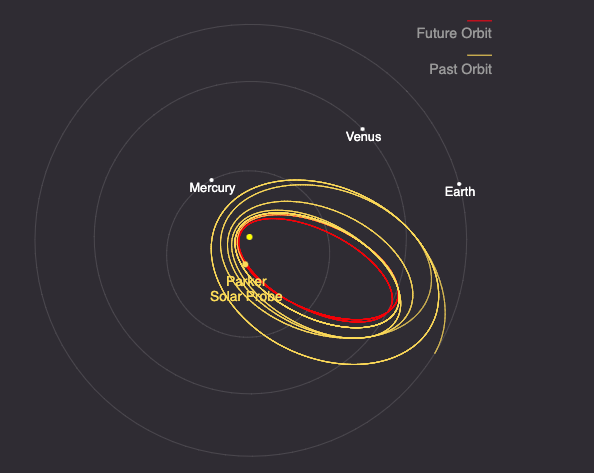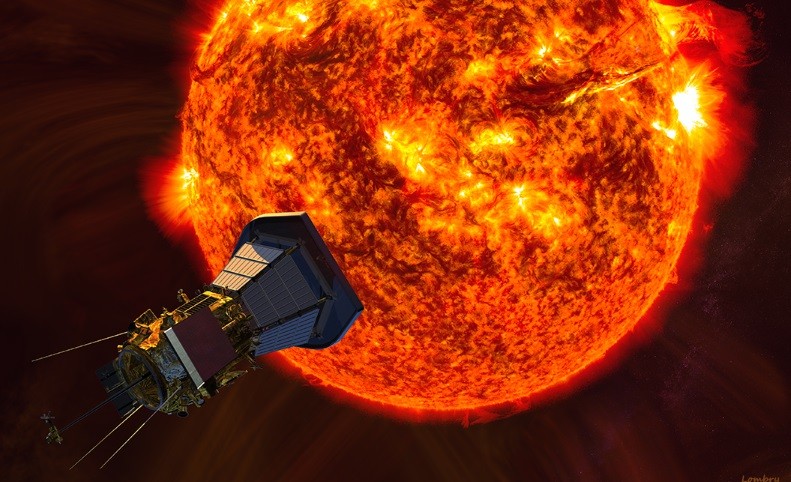Launched on August 12, 2018, the Parker Solar Probe is designed to withstand the brutal near-solar environment and heat of the sun and its atmosphere. Its mission is to probe the near-solar environment and help us answer yet unanswered questions about the hot, tenuous solar corona, the solar wind, coronal streamers and the near-solar environment in unprecedented detail. Because of the heat and brutal, near-solar environment, there are no forward facing cameras, so we can’t actually “see” the sun from the probe.
The orbital trajectory of the probe brings it inexorably closer to the sun with each flyby, and Wednesday, September 27, 2023 was the closest yet. At times, the trajectories will bring it close to Venus in what are known as a “Gravity Assists”, maneuvers that use the planet’s orbital angular momentum to boost the probe’s speed. To achieve this closest flyby yet, in a record-breaking pass of the sun, it performed such a flyby.
Then, during its latest perihelion (closest point to the sun) on September 27, it was able to pass just 7.26 million kilometers from the solar photosphere or about 7 times closer to the sun than Mercury – a new record!
In doing so, it also achieved a record-high speed, soaring past our star at 635,266 kilometers per hour or 176 km/sec! The Parker Solar Probe will make it closest approach to the sun on December 24, 2024, after one final Venus fly-by on November 6, 2024. The planned mission duration is 7 years from date of launch (2025) always with the possibility of a mission extension. During that time, it will have completed 24 orbits around the sun. At its closest approach, the spacecraft will come within about 6.2 million kilometers of the Sun, or almost 8x closer to the sun than the planet Mercury!
The John’s Hopkins University Applied Physics Lab is managing the science data, video and imagery for NASA, all of which can be found here.

The planned (and already executed) Parker Solar Probe Orbits. Image via: John’s Hopkins Applied Physics Lab.
Mission Orbit Number 17:
A quick, interactive web-based version of Stellarium is available here Tonight's Sky. When you launch the application, it defaults to north-facing and your location (on mobile and desktop).
Astronomy For Change: https://astronomyforchange.org
Did you enjoy this article or like what we do? Why not leave a tip or buy us a Coffee?
Follow Us On Twitter: https://twitter.com/astronomychange
Why not support us on Patreon: https://www.patreon.com/astronomyforchange
Imagination is more important than knowledge
![]()
An index of all articles can be found here.
If you enjoyed this article, please consider supporting us with a modest donation
or through a subscription on our Patreon Page
Membership at Astronomy for Change is Free!




